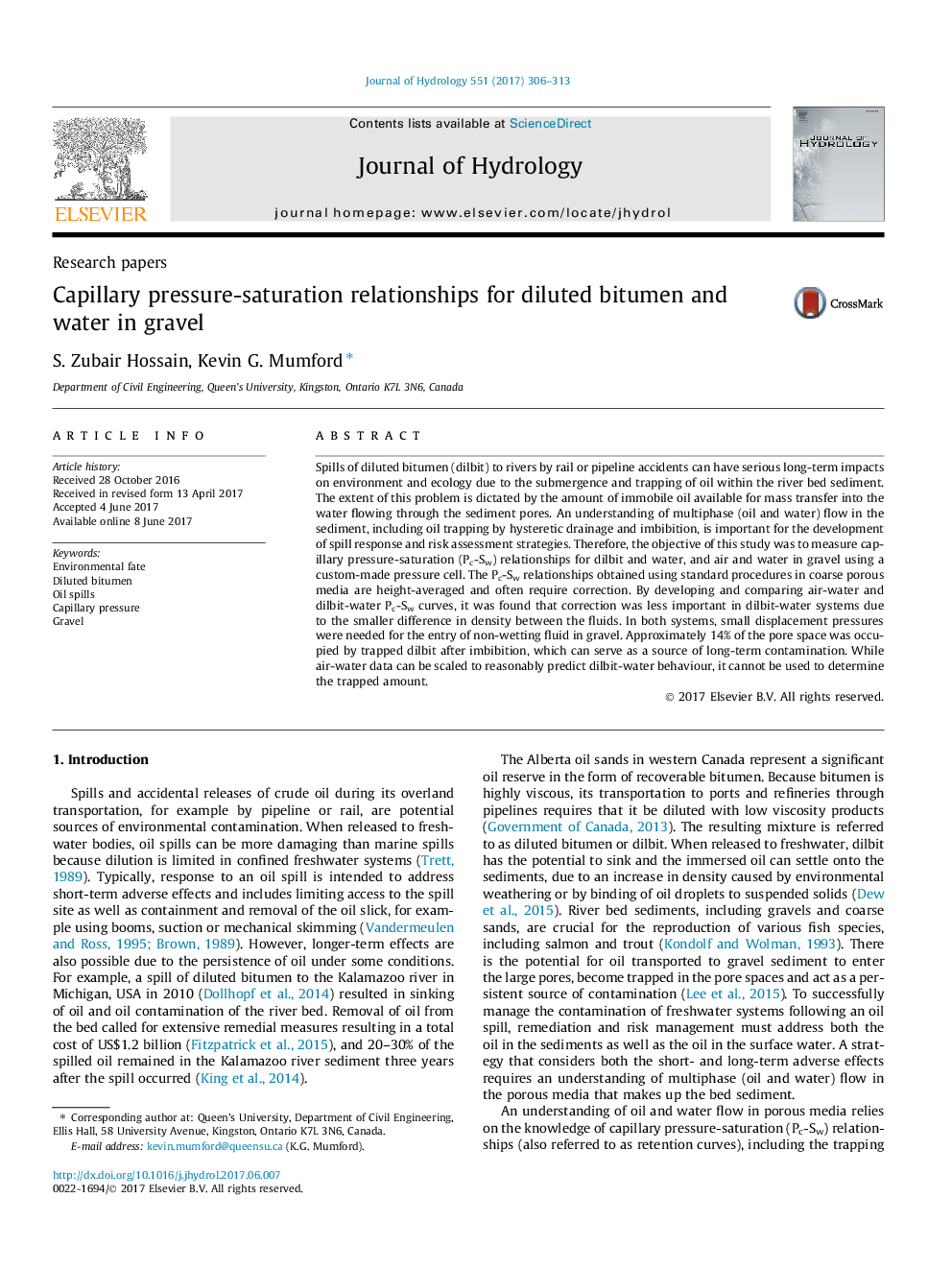| کد مقاله | کد نشریه | سال انتشار | مقاله انگلیسی | نسخه تمام متن |
|---|---|---|---|---|
| 5770903 | 1629903 | 2017 | 8 صفحه PDF | دانلود رایگان |
- Laboratory measurements of diluted bitumen-water and air-water fluid pairs.
- Capillary pressure-saturation curves during drainage and imbibition in gravel.
- Displacement capillary pressure for diluted bitumen and water was <0.5Â cm of water.
- Scaled curves agreed well if gravity correction was applied.
- Gravel pore space contained 14% trapped diluted bitumen following imbibition.
Spills of diluted bitumen (dilbit) to rivers by rail or pipeline accidents can have serious long-term impacts on environment and ecology due to the submergence and trapping of oil within the river bed sediment. The extent of this problem is dictated by the amount of immobile oil available for mass transfer into the water flowing through the sediment pores. An understanding of multiphase (oil and water) flow in the sediment, including oil trapping by hysteretic drainage and imbibition, is important for the development of spill response and risk assessment strategies. Therefore, the objective of this study was to measure capillary pressure-saturation (Pc-Sw) relationships for dilbit and water, and air and water in gravel using a custom-made pressure cell. The Pc-Sw relationships obtained using standard procedures in coarse porous media are height-averaged and often require correction. By developing and comparing air-water and dilbit-water Pc-Sw curves, it was found that correction was less important in dilbit-water systems due to the smaller difference in density between the fluids. In both systems, small displacement pressures were needed for the entry of non-wetting fluid in gravel. Approximately 14% of the pore space was occupied by trapped dilbit after imbibition, which can serve as a source of long-term contamination. While air-water data can be scaled to reasonably predict dilbit-water behaviour, it cannot be used to determine the trapped amount.
Journal: Journal of Hydrology - Volume 551, August 2017, Pages 306-313
